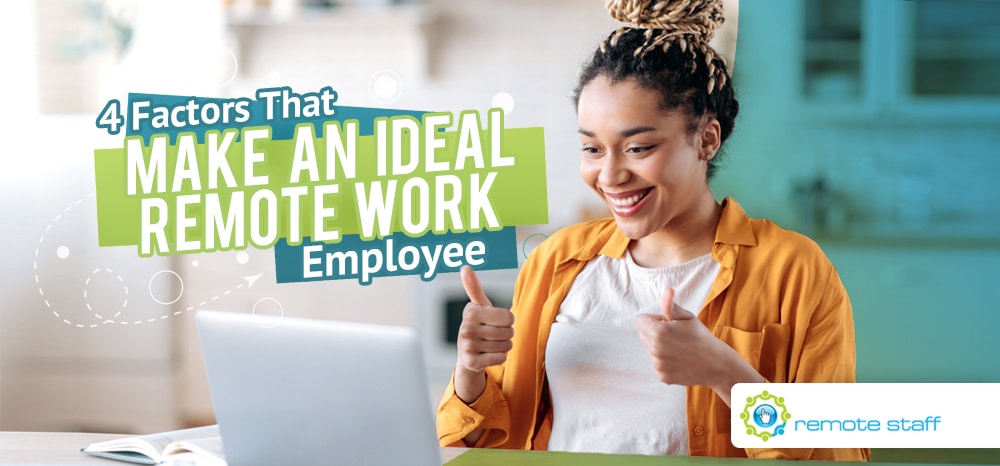Today’s business leaders grapple with gauging the global pandemic’s impact on employee productivity. Sure, remote employment has been largely efficient and productive. But there are still employees who work better within the traditional working set-up, and we have to account for those.
Remote work is clearly here to stay, but it’s not for everyone. Whether you decide to have all your employees work from home or return to the office moving forward, you need to consider which of them would thrive in which environment. Happy employees make for productive ones, after all, and identifying the traits that make certain people more suitable for remote work can make the decision easier.
So, what does the ideal remote work employee look like? Here are four factors to consider when deciding which of your employees to retain on a WFH set-up and which ones to recall to the office:
Collaborative > authoritative

Some employees like to work within big groups, while others are more comfortable working alone.
Collaborative employees tend to work well in a remote environment since they thrive on the independence and interdependence it simultaneously fosters. On the other hand, employees who enjoy leading, bossing around, or supervising their peers can do it better within a traditional office.
Furthermore, the ideal remote worker isn’t too keen on corporate hierarchies. The best ones are easy to collaborate with and tend to respond to their co-workers the same regardless of their title.
Self-reliance

The best remote workers are typically self-starters by nature. So long as the nature of their job is suitable to a WFH set-up, they often need very little supervision. Think of the people on your team who can execute their tasks properly without too much hand-holding.
Sure, they might ask for feedback, input, or clarification every now and then, but on the whole, they know what they have to do…and how to do it well.
On the other hand, if you have employees who require constant assistance or supervision, they’re probably better off going back to the office.
However, do bear in mind that productivity shouldn’t be your only metric. It also helps to ask your employees what they personally prefer. Sometimes, a person might produce great results while working alone yet they might find the set-up draining and isolating. And vice versa. Thus, it’s important to keep an open dialogue so you can both arrive at a comfortable middle ground for both parties.
Routine, recurring tasks

Steady, recurring tasks are the most ideal for a remote work set-up. Since the functions are backed by standard processes and schedules, the expected results are pretty clear-cut. Chances are, the employee in question already has their routine down pat too.
For example, your admin staff is especially suited for remote work since they can carry out their tasks remotely without much trouble. Managing your calendar, scheduling your appointments, and so on, don’t really require in-person supervision or collaboration.
On the other hand, employees who monitor or develop production processes might work better within an office set-up or a hybrid work model.
Excellent attention to detail

Workers with a keen eye for detail usually work well alone. As we mentioned earlier, they don’t need other people to police their every move. When stuck, they’re likely to analyse previous projects before requesting further assistance.
In addition, these employees are the type to think things through before submitting proposals. They also tend to double check their own work rather than relying on a supervisor to do it for them.
Heck, if you have employees like these, keep them no matter which set-up they prefer.
It’s important to analyse your employees’ strengths before you present them with opportunities. However, don’t forget to ask what they prefer as well. After all, you’d want a set-up that works well for both parties.
Still stuck and unsure about how to proceed with a remote working set-up? No need to stress. Remote Staff has been helping Aussie entrepreneurs like you find, hire, and retain the best Filipino remote workers for the last 14 years and counting. On top of that, we also provide assistance in onboarding so you can just focus on more important things: growing your business with the help of our remote teams.
Call us today or schedule a call back and let’s get started.
Serena has been working remotely and writing content for the better part of the last decade. To date, she's written for Pepper.ph and Mabuhay Magazine, among others, and has churned out more than a thousand articles on everything from The Basics of Stock Market Investing to How to Make Milk Tea-Flavored Taho at home. Hermits, aspiring hermits, and non-hermits with interesting project propositions may email her at serena.estrella10@gmail.com.
























 Zero Recruitment Fee
Zero Recruitment Fee